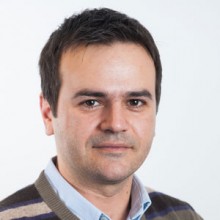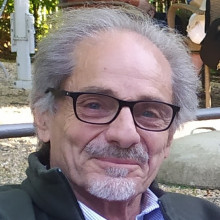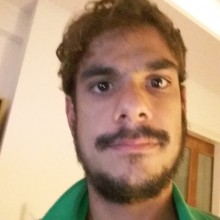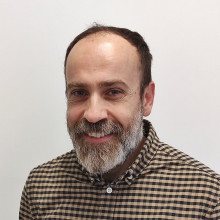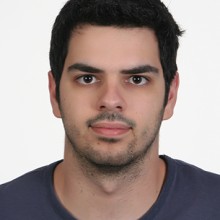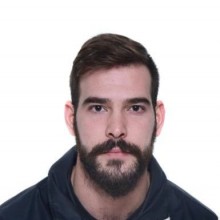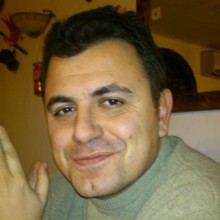Research Group Overview: Mission, research focus, main scientific directions
In this direction the research mainly focuses on the generation, characterization and applications of intense coherent extreme-ultraviolet (XUV) radiation emitted in the form of pulses of duration less than 1fs (attosecond pulses) [Nature 426, 267 (2003); Nature Phys. 3, 846 (2007); Nature Phys. 7, 781 (2011); APL Photonics 4, 080901 (2019); Photonics, 4, 26, (2017)]. It targets the development, upgrades and running of a state of the art, table top, attosecond facility dedicated to the investigation of ultrafast dynamics in all states of matter, as well as of non-linear and strong field phenomena induced solely by the XUV radiation. Other activities include, the generation of high photon flux circularly polarized XUV pulses for investigating ultrafast chiral phenomena in the XUV spectral region, the development of high spatial resolution ion imaging techniques for single-shot high resolution time delay spectroscopy in the XUV, electron-ion coincidence studies in strong field laser-atom interactions, adaptive quantum control through feedback optimized pulse shaping and the development of quantitative methods in strong field interactions.
Research Topics
Direction #A: Attosecond Science
Specifically, the research mainly focuses on the generation, characterization and applications of intense coherent extreme-ultraviolet (XUV) radiation emitted in the form of pulses of duration less than 1fs (attosecond pulses). It targets the development, upgrades and running of a state of the art, table top, attosecond facility dedicated to the investigation of ultrafast dynamics in all states of matter, as well as of non-linear and strong field phenomena induced solely by the EUV radiation. Other activities include electron-ion coincidence studies in strong field laser-atom interactions, adaptive quantum control through feedback optimized pulse shaping and the development of quantitative methods in strong field interactions.
Contributions to the above research topic encompass (chronologically listed):
I) the development of a large number of novel devices and techniques such as 1) the dispersionless Michelson interferometer for the characterization of attosecond pulse, (Appl. Phys. B 74, 197 (2002); Opt. Lett. 27, 1561 (2002)), 2) the dispersionless non-linear XUV autocorrelator (Nature 426, 267 (2003)), 3) phase control techniques for he characterization of attosecond pulses (Phys. Rev. A 64, 1, 051801 (R) (2001); Phys. Rev. Lett. 96, 163901 (2006); New J. Phys. 9, 232, (2007)), 4) an inteferometric polarization gating device for the generation of intense isolated attosecond pulses by multi-cycle high power laser pulses (Nature Phys. 3, 846 (2007)), 5) a carrier-envelope-phase (CEP) meter for multi-cycle laser pulses (Phys. Rev. A 82, 061401 (2010)), and the use of an Ion Microscope detector for quantitative studies in the linear and non-linear XUV regime (Phys. Rev. A 90, 013822 (2014); Sci. Rep. 6, 21556 (2016)).
II) highlights such as 1) the first indication of experimental attosecond localization (Phys. Rev. Lett. 83, 4289 (1999)), 2) the first electron-ion coincidence measurements in the strong field interaction region (Phys. Rev. Lett. 85, 2268 (2000)), 3) the first two XUV-photon ionization be a comp of higher harmonics Phys. Rev. Lett. 90, 133902 (2003), 4) adaptive quantum control of vibrational ionization branching ratios through feedback - optimized fs pulse shaping (J. Chem. Phys. 118, 595 (2003)), 5) the direct observation of attosecond light bursts emitted from gas and solid state media (Nature 426, 267 (2003); Nature Phys. 5, 124 (2009)), 6) the generation of intense coherent continuum XUV radiation generated by multi-cycle high-power laser fields (Nature Phys. 3, 846 (2007)), 7) the observation of atomic direct double ionization by a harmonic superposition (Phys. Rev. A 74, 051402(R) (2006)), 8) the tracking of the autoionizing-wavepacket dynamics and molecular dynamics at 1-fs temporal scale (Phys. Rev. Lett. 105, 043902 (2010); Nature Phys. 7, 781 (2011); Phys. Rev. A 89, 023420 (2014)), 9) the measurement of the electron quantum path details of the recollision process (Phys. Rev. A 90, 013822 (2014)) and the quantitative measurement of the single- and the two-XUV-photon ionization cross-section of Helium in the 20eV photon energy range (Sci. Rep. 6, 21556 (2016)).
The latest technological advancement towards a table top high XUV-photon-flux attosecond pulse source is the newly constructed ≈ 18 m long 20 GWatt XUV (HHG) beam line [9]. The beam line provides the highest ever XUV pulse energy (≈ 230 µJ per pulse) in the spectral region 20-30eV. The corresponding photon flux of 0.6 ´ 10^14 photons/pulse is competitive to FEL photon fluxes in this spectral region. Using these pulses a focused intensity of ~7 ´ 10^15 W/cm2 has been achieved (a value that by using high reflectivity XUV optics can be increased to 10^17 W/cm2) and multiply charged Argon atoms (Ar^4+) have been produced by multi-XUV-photon ionization processes (Phys. Rev. A 98, 023426 (2018)).
The long-standing scientific quest of real-time tracing electronic motion and dynamics in all states of matter has been remarkably benefited by the development of intense pulsed laser sources with a temporal resolution in the attosecond (1 attosecond (asec) = 10^-18 sec) time scale. In the last 15 years we have systematically developed the means for the generation of high photon flux extreme ultraviolet (XUV) pulses with 1fs to sub-fs pulse duration, making use of the process of higher order harmonic generation (HOHG). Utilizing multi-cycle laser pulses delivered by high peak Ti:S laser systems, in combination with Polarization Gating techniques [1], XUV pulse intensities up to 10^14 W/cm2 have been reached in the spectral region 10-24 eV. These pulses have been exploited in I) the temporal characterization of attosecond pulses [2-4]; II) the first proof of principle XUV-pump-XUV-probe experiments for the study of 1fs scale electron dynamics in atoms/molecules [5, 6], and III) quantitative studies of linear and non-linear ionization processes in XUV regime [7,8].
The latest technological advance towards an XUV high photon flux attosecond pulsed source is the newly constructed ≈ 18 m long (HHG) 20 GWatt XUV beam line [9]. The beam line beam line provides the highest ever XUV pulse energy (≈ 230 µJ per pulse) in the spectral region 20-30eV. The corresponding photon flux of 0.6 X 10^14 photons/pulse is competitive with FEL photon fluxes in this spectral region. Using these pulses a focused intensity of ~7 X 10^15 W/cm^2 has been achieved (a value that by using high reflectivity XUV optics can be increased to 10^17 W/cm^2) and multiply charged Argon atoms (Ar^4+) have been produced by multi-XUV-photon ionization processes.
[1] P. Tzallas et al. Nature Physics 3, 846 (2007)
[2] P. Tzallas et al. Nature 426, 267 (2003)
[3] L. A. A. Nikolopoulos Phys. Rev. Lett.. 94, 113905 (2005)
[4] Y. Nomura et al. Nature Physics 5, 124 - 128 (2009)
[5] P. Tzallas et al. Nature Physics 7, 781 (2011)
[6] P. A. Carpeggiani, et al. Phys. Rev. A 89, 023420 (2014)
[7] N. Tsatrafyllis, et al., Sci. Rep. 6(1), 21556 (2016).
[8] P. Tzallas, et al., J. Opt. 20(2), 024018 (2018).
[9] A. Nayak et al., Phys. Rev. A 98, 023426 (2018)
Coherent broadband XUV radiation has been extensively used over the last decades for tracing ultrafast dynamics and performing time delay spectroscopic studies of systems of the microcosm. The majority of these studies were performed using XUV-XUV or XUV-IR pump-probe schemes involving interferometers (or wave front beam splitters) for introducing a delay between the pump and the probe pulses. However, these schemes suffer from the intrinsic limitations that accompany any pump-probe arrangement. In a pump-probe experiment the evolution of the system is obtained by multiple measurements at different time delays introduced between the pump-probe pulses during which all the experimental parameters must remain constant. Additionally, a pump-probe measurement with asec resolution suffers from spectroscopic limitations due to difficulties on maintaining the experimental parameters constant for long data acquisition times and long delays between the pump-probe pulses.
The aim of the research is to overcome these obstacles and develop an approach which provides "high" temporal (sub-fs) and spectral resolution (meV) in a single-shot measurement. This will be achieved by means of time gated ion microscopy approach [1] where an Ion Microscope with spatial resolution in the range of ≈ 1 μm will be used to record the ion distribution produced a 2-XUV-photon ionization process at the focus of two counter propagated XUV pulses. Towards this direction we will use the 20-Gwatt XUV beam line that we have recently developed at FORTH.
[1] P. Tzallas, et al., J. Opt. 20, 024018 (2018).
Heads
Scientific Staff
Alumni
Infrastructure Equipment
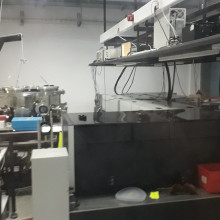
A double-stage operation Ti:S laser system of FORTH-IESL delivering I) 10Hz rep. rate, IR laser pulses of 20 fs duration and energy up to 350mJ/pulse and II) at 1kHz rep. rate, IR laser pulses of 35 fs duration and energy up to 3mJ/pulse
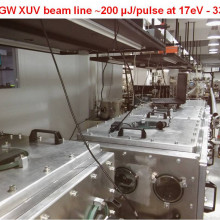
A newly constructed ≈ 18 m long 20-GWatt coherent XUV (HHG) beam line [Phys. Rev. A 98, 023426 (2018); Sci. Reports 10, 3759 (2020)] driven by the high power Ti:S laser system. The beam line provides asec/fs XUV pulses with the highest ever pulse energy (≈ 230 µJ per pulse) corresponding photon flux of 6 x 10^13 photons/pulse in the spectral region 17-33eV.
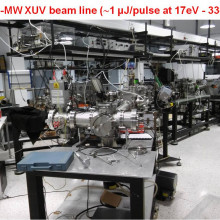
A 10 m long 100 MWatt coherent XUV beam line [Nature Phys. 7, 781 (2011)] driven by the high power Ti:S laser system. The beam line provides asec/fs XUV pulses with energy up to 1 μJ/pulse with corresponding flux 2x10^11 photons/pulse in the spectral range of 17-33 eV.




